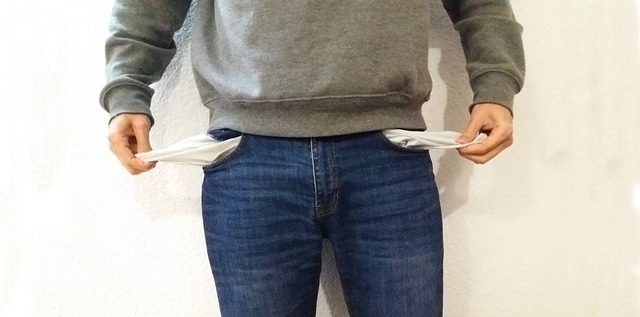
Paying off your debt is not easy, especially if you’re fighting with a high-interest rate and a mountain of loans. But there are several ways you can get your debt off your chest, and the debt snowball method is one of them.
The debt snowball method works with most kinds of debt: student, personal, auto, credit card, and medical debt, yet not with mortgage repayments. So, don’t try that.
But what is the debt snowball method, and how can it help you get rid of your debt a piece at a time? Good questions. Let’s find out.
What Is the Debt Snowball Method?
The debt snowball method is a debt repayment strategy popularized by Dave Ramsey, a personal finance author.
The strategy involves you listing all your debts from smallest to largest and then paying off your smallest debts first before moving on to the next. It can help you erase your student loans, credit card debt, and personal debt.
How Does the Debt Snowball Method Work?
Here’s how the debt snowball method works:
- List your debts from smallest to highest.
- Set aside extra money to pay as much of the smallest debt as possible while making minimum payments to all other debts.
- Once the smallest debt is paid off, you should start making extra payments towards your second-smallest debt while continuing your minimum debt payments.
- Rinse and repeat the above steps until all your debts — from smallest to largest — are paid in full.
What About Interest Rates and Motivation?
If your largest debts have the most amount of interest, it’s going to be a few years before you see your debt go down. And by the time your debt goes down, you’ll probably have lost your motivation because it’ll be taking forever to win.
However, when you say goodbye to your smallest debt first, you’ll see real progress, which increases your motivation to eliminate your other debt. And because of that motivation, soon, you’ll be making monthly payments of hundreds of dollars towards your debt instead of measly minimum payments that’ll only bloat your debt.
So, in a nutshell, ignore your interest rates and double down on cutting out your smallest debt before moving on to the largest because, by the time you reach your largest debt, you’ll be mostly debt-free. How amazing is that?
A Debt Snowball Example
Let’s say you have three different debts you need to pay per month:
- $2,000 credit card debt — $50 monthly payment
- $10,000 car loan — $170 monthly payment
- $50,000 student debt — $500 monthly payment
If you use the minimum debt repayment strategy, it’s going to take you a few years to get through your debt. However, if you go with the debt snowball strategy, you’ll probably get out of your debt sooner.
Here’s how using the debt snowball method will work:
- Once you decide to make the largest payments on your smallest debt, the $2,000 credit card debt, in this case, you’ll probably need to find some remote work to make an extra $1,000 and add it to your snowball.
- Since you’ll be paying an extra $1,000 on your credit card debt plus the $50 monthly payment, you’ll be clear of that debt in less than two months.
- Now, you can take the $1,000 you’re getting from your side hustle and the $50 you saved from your monthly credit card debt bill and put it towards your car loan, making a payment of $1,220 ($1,050 plus the $50 monthly payment). Making regular payments will help you get rid of the car loan in eight and a half months.
- By the time you reach your dreaded student debt, you can easily put $1,720 ($1,220 plus $500 monthly payment) towards it, meaning you’ll be free of that debt within two and a half years.
As you can see above, like a snowball, each paid-off debt frees up more money that you can put towards eliminating the remaining debts. So, by using the debt snowball method, you’ll be rid of your $62,000 debt in just 39 months. Isn’t that amazing?
Advantages vs. Disadvantages of the Debt Snowball Method
Here are several pros and cons of using the debt snowball method to pay back your debt:
Pro#1 – It Helps You Stay Motivated
Seeing your smaller debts go down quickly can help you stay motivated enough to pay off your larger debts. If you started the other way around, you’d probably become demotivated because it’ll take too long to see a significant dent in your largest debts.
Pro#2 – It Is Easy to Implement
The debt snowball method doesn’t require you to pay attention to your annual interest rates for each debt. All you have to do is order your debts according to the amount owed and start cutting them down.
Con#1 – It Isn’t the Best Choice for Saving Money
If you’re thinking of saving money by using the debt snowball method, you’re in for a surprise. In fact, because you’re prioritizing your loan balance over the annual interest rates, you may end up paying more over time.
Con#2 – It Isn’t the Most Time-Effective Method
As the snowball method focuses on repaying your debts according to their balances, it may take you longer to pay off your debts.
Ready to Start Snowballing Your Debt?
Several things make life easier to live. For instance, using a pay stub maker to create pay stubs is great for independent contractors. Similarly, using the snowball method to get rid of your debt is best for getting debt-free.
So, rather than concentrating on bringing down your hefty student loans penny by penny, consider focusing on your smallest debts and become debt-free faster!
